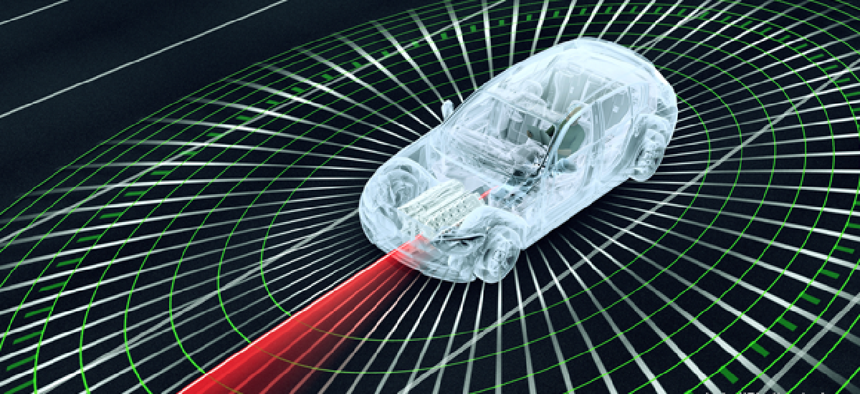States embrace benefits of autonomous vehicles

The technology can help states improve safety, expand public transportation and give the elderly and disabled more options, experts say.
With officials in Colorado and at the University of Michigan planning to put autonomous shuttles on the roads this year, state and local agencies across the country are working with industry to establish policies and regulations. But questions remain over how states can encourage testing and deployment without limiting innovation.
In 2016, Michigan became the first state to allow the public to buy and use self-driving cars. Auto manufacturers and ride hailing services were also given the ability to use autonomous vehicles for ride sharing.
“Autonomous shuttles could be deployed in neighborhoods where it isn’t cost effective to put mainline buses,” Kirk Steudle, director of the Michigan Department of Transportation, said during a Jan. 24 panel at MobilityTalks. “I’ve been encouraging agencies to embrace this technology … because if you get rid of bureaucracy and focus on the technology, then you can get there faster.”
The Michigan Council on Future Mobility was created in 2016 to allow companies and agencies to work together to “remove barriers to innovation,” Steudle said. The group is examining insurance and cybersecurity questions in addition to looking into whether the state has the right talent pool to develop and repair autonomous vehicles.
California's Department of Motor Vehicles is taking the lead in establishing regulations for autonomous vehicle testing. Fifty companies have been approved by the DMV to test autonomous vehicles that have a human driver behind the wheel, but new regulations are expected this year to allow for driverless vehicles on public highways.
When people start to see these vehicles on the road, California DMV Deputy Director Bernard Soriano said the public will need to be educated on what the cars can and can’t do.
“These cars are going to drive like my grandmother because they are going to follow the letter of the law, and we are not used to that as a society,” Soriano said. “We are going to need [to adjust our thinking] because these cars are designed to meet the laws of the road.”
Once more autonomous vehicles are on the road, Soriano said he expects to gradually see more congestion, which will require the state to continue its commitment to improving roads and creating a sustainable infrastructure.
Autonomous vehicles can also give disabled and elderly populations a new level of mobility. Pennsylvania has approximately 950,000 residents with disabilities, some of whom are not able to operate motor vehicles.
Under state laws, health care personnel are required to report drivers under their care whose driving skills may be impaired by medical related conditions to the Pennsylvania Department of Transportation.
“When we take an individual’s license away today, I have taken away their ability to make choices,” PennDOT Deputy Secretary Kurt Myers said. “One of the things that autonomous vehicles that can do is to dramatically improve the quality of life for our disabled community … and give them the flexibility back to be able to do the things that they have always been able to do on their schedule.”
Based on testing conducted at Carnegie Mellon University and policy work from the University of Pennsylvania, PennDOT held a summit at Penn State in September 2017 to help local, county and regional officials prepare their infrastructure for autonomous vehicles.
The autonomous vehicle technology was demoed for summit attendees at Penn State’s Thomas D. Larson Institute Test Track.
An understanding of the technology can help municipalities make decisions for their long-term planning purposes. For instance, Myers said more autonomous vehicles on the roads might prompt cities to rethink spend millions of dollars on parking garages.
When it comes to safety, California, Michigan and Pennsylvania officials emphasized a need to educate the public on the benefits to autonomous driving.
Since testing began in California in 2014, only 54 crashes have occurred involving autonomous vehicles -- compared to the 100 people who die every day on U.S. roads.
“We are concerned about safety, and we want to make sure that the roads are safe for all who operate on them," Myers said. "But we also understand that there is a degree of risk with this technology that can be managed.”
NEXT STORY: NIST examines blockchain misconceptions





